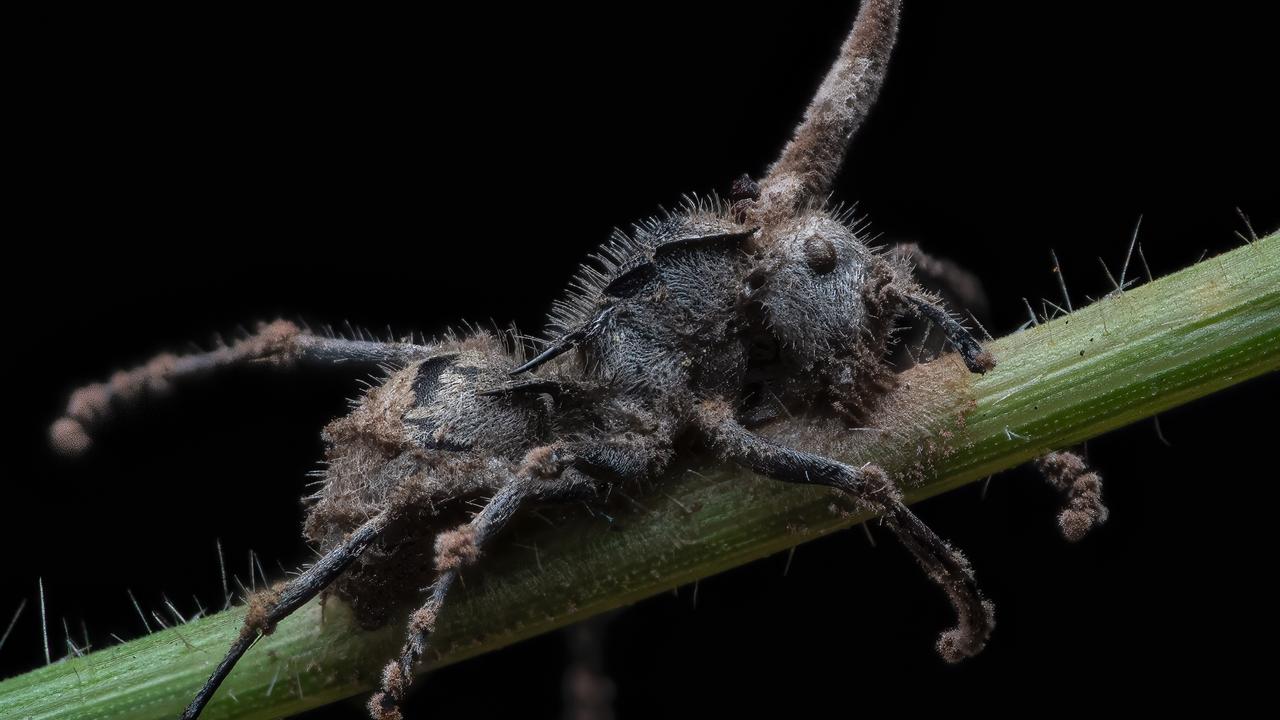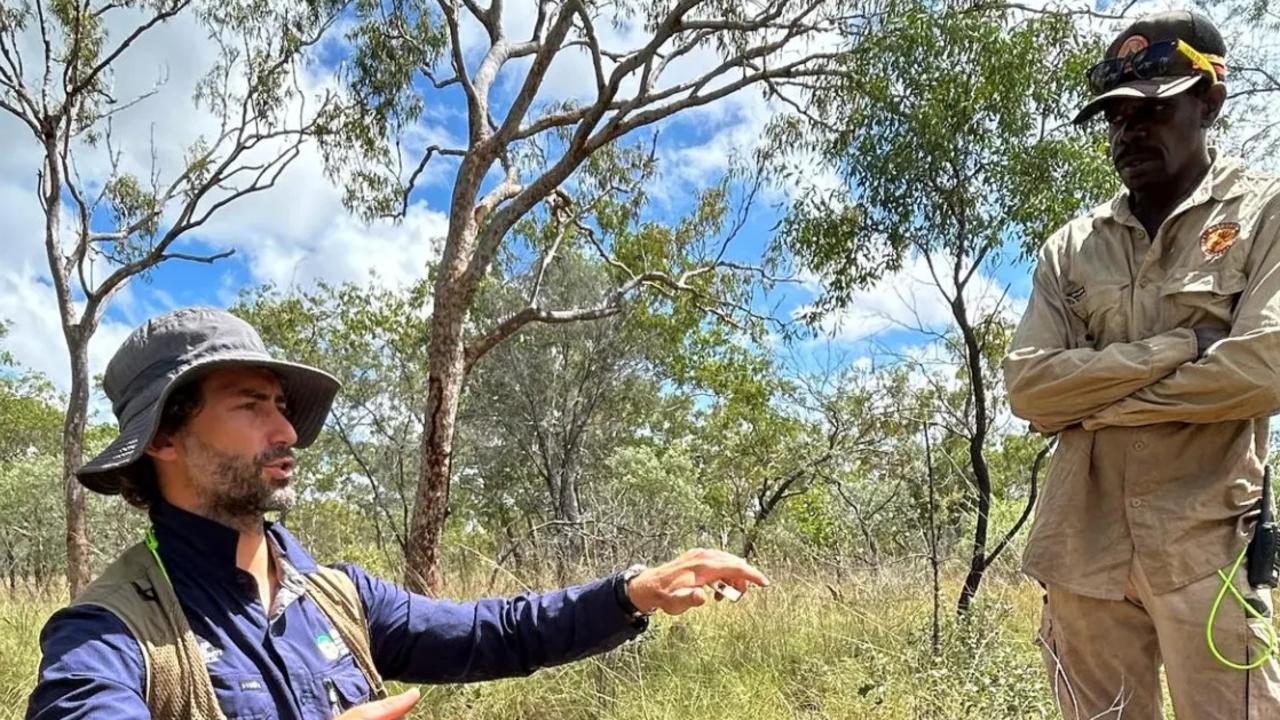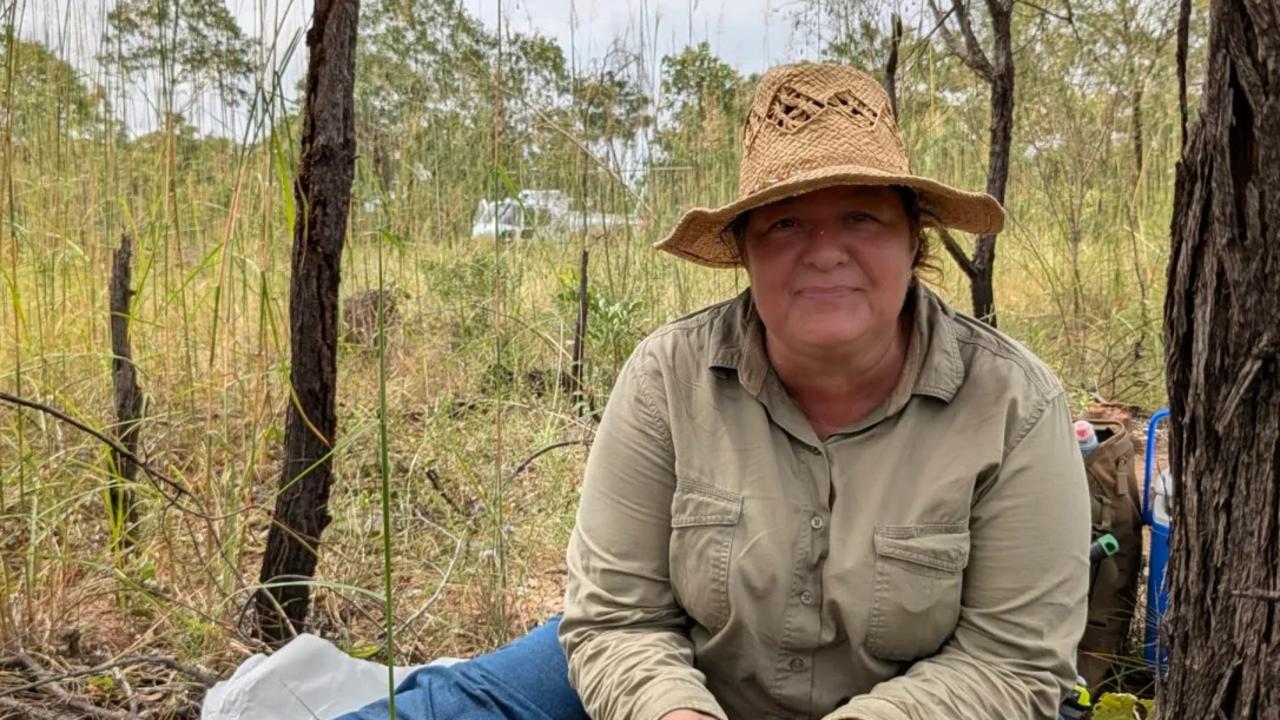‘Zombie ants’ discovered outside Katherine alongside rare fungus
The ants had been infected with a fungi, in what is thought to be a first for the NT.

News
Don't miss out on the headlines from News. Followed categories will be added to My News.
A team of researchers has found ‘zombie ants’ and what is believed to be a never before seen fungi in the Northern Territory.
The eerie discovery was made in a remote savanna in Jawoyn country outside Katherine.
University of Western Australia myrmecologist Dr François Brassard found the ants, which had been parasitised, possessed and then consumed by a fungus, while on an expedition as part of the Bush Blitz program, a nationwide effort that catalogues biodiversity in Australia.
Dr Brassard, who completed his PhD at Charles Darwin University, said it was possible the fungi had never been recorded by modern science.
“I found all these little dead ants that were propped up or sort of clamped on different grass stems and I figured out that these might have been parasitised by a fungus,” he said.

Dr Brassard said once the ants were infected by the fungi spores, the fungus grew inside the ant and controlled it using hormones.
“It makes the ant climb up either a grass stem or bush and then make it clamp down in a sort of dead grip where the ant is not going to move again and it dies in that position.”
Once the ant dies, Dr Brassard said the fungus consumed the ant and created a “fruiting body”, which shot spores allowing the fungi to reproduce.

“The ones that I found were very strategically placed because all the dead ants that had these fruiting bodies on them were just above foraging trails of live ant species really near a colony and so I think this fungi was sort of thriving because it kept re-infecting ants from that one colony,” he said.
Dr Brassard collected samples from the ants, which are currently being investigated by fungi expert Sherie Bruce.

Ms Bruce said the fungi was a type of ophiocordyceps, and agreed with Dr Brassard that it may not be recorded in western science.
“I thought it’d be highly unlikely that I’d ever see it in my lifetime so for me to see it three or four times on this particular Bush Blitz was amazing,” Ms Bruce said.
Ms Bruce emphasised the collaboration between scientists of different disciplines that allowed the discovery.
“I would have skipped over the ant nest and kept going.”
“It just shows the importance of being able to do collaborative science with other disciplines, to be able to see something in a different way.”
More Coverage
Originally published as ‘Zombie ants’ discovered outside Katherine alongside rare fungus









